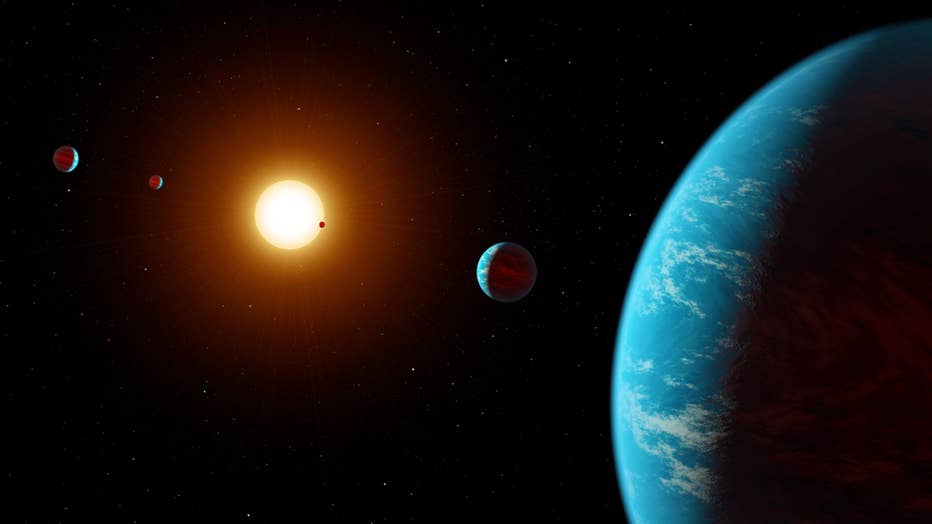NASA confirms existence of 301 new planets outside our solar system

NASA launches Earth-observing satellite to track 'health of planet'
NASA successfully launched Landsat 9, a satellite designed to track changes on our planet to inform on key areas such as climate change, on Monday, Sept. 27. (Credit: NASA via Storyful)
NASA scientists have confirmed the existence of hundreds of new planets outside of our solar system. NASA said 301 exoplanets have been newly validated and added to the total tally.
The discoveries were made thanks to a new machine learning method of differentiating between stars and planets far off in space called ExoMiner.
ExoMiner combs through data previously gathered by NASA’s Kepler and K2 missions to decipher what is and isn’t a planet. The missions gather data on thousands of stars and each one has the potential to host multiple exoplanets.
"It's a hugely time-consuming task to pore over massive datasets. ExoMiner solves this dilemma," NASA said in a press release.
Just as all the planets in our solar system orbit the sun, planets that orbit other stars are called exoplanets.
Before an exoplanet’s existence is "validated," it’s first "confirmed" by scientists when different observation techniques reveal features that can only be explained by a planet. Some clues scientists look for to find and characterize exoplanets include a star’s wobble, dips in light and minuscule movements.
A planet is then "validated" using statistics – meaning how likely or unlikely it is to be a planet based on the data, NASA explained.
"When ExoMiner says something is a planet, you can be sure it's a planet," added Hamed Valizadegan, ExoMiner project lead and machine learning manager with the Universities Space Research Association at Ames. "ExoMiner is highly accurate and in some ways more reliable than both existing machine classifiers and the human experts it's meant to emulate because of the biases that come with human labeling."
These 301 new exoplanets add to the 4,569 others already validated.

This artist concept shows K2-138, the first multi-planet system discovered by citizen scientists. The central star is slightly smaller and cooler than our Sun. NASA/JPL-Caltech
RELATED: NASA says next astronaut moon landing will be in 2025 at earliest
On average, it is estimated that there is at least one planet for every star in the galaxy. That means there's something on the order of billions of planets in our galaxy alone, many in Earth's size range, according to NASA.
NASA said none of the newly-confirmed planets are believed to be Earth-like or habitable.
NASA scientists said now that they have trained ExoMiner using Kepler data, the information learning can be transferred onto other missions.
"There's room to grow," said Valizadegan.
This story was reported from Detroit.

